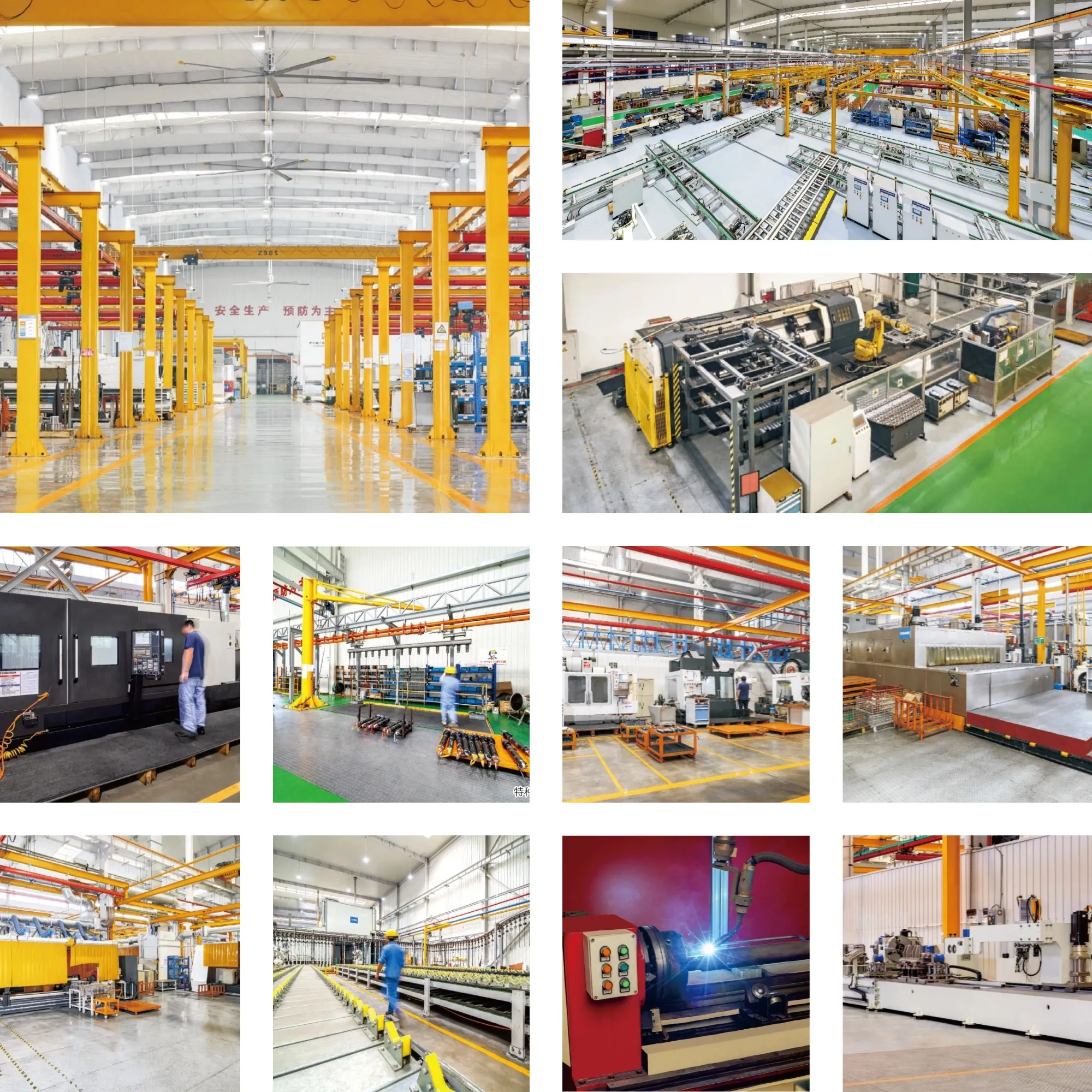Replacement Of DC209791 Hydraulic Cylinder
Introduction
The Replacement Of DC209791 Hydraulic Cylinder is an essential component used in heavy machinery to provide movement and power. This hydraulic cylinder is used to convert pressure from fluid into force and motion. It is a vital component to ensure the smooth operation of machinery.
Specifications and Models
The Replacement Of DC209791 Hydraulic Cylinder weighs 61 lb, has a height of 7.8 in, width of 10.3 in, and length of 57.7 in. It is compatible with the 572, 582, 592, 852, and 854 models.
Features
Improved Equipment Performance
Replacing damaged or worn hydraulic cylinders can restore equipment to its normal operational ability, ensuring optimal performance in various applications.
Enhanced Safety
Regularly changing hydraulic cylinders can reduce safety hazards caused by cylinder malfunction, ensuring the safety of operators and equipment.
Overload Protection
New cylinder designs often incorporate better overload protection mechanisms, improving safety.
Quick Installation
Modern hydraulic cylinders are designed with easy installation and replacement in mind, reducing downtime.
Standardized Components
Many hydraulic cylinders are standardized products, making it easier to obtain replacement parts in the market.
Applications
The Replacement Of DC209791 Hydraulic Cylinder is used in several heavy machinery applications. Here are some examples:
Excavator
The hydraulic cylinder in the excavator’s arm or bucket may become damaged due to overload or extended use, requiring replacement to restore normal operation.
Crane
The crane’s boom hydraulic cylinder is susceptible to wear and tear during frequent lifting and lowering, requiring regular replacement to ensure safety.
Tractor
The front-end loader hydraulic cylinder in a tractor may leak or experience decreased performance due to constant lifting and tilting operations, requiring replacement.
Harvester
The hydraulic system in a harvester is under high pressure during harvesting and the cylinder may become worn out, requiring timely replacement to maintain operational efficiency.
Automated Production Line
Hydraulic cylinders are used to control robotic arms and other automation equipment. Cylinder failure can reduce productivity, necessitating immediate replacement.
Other Applications
Hydraulic cylinders are also used in mining equipment, bulldozers, and other heavy machinery applications.
Maintenance
Regular maintenance and inspection of hydraulic cylinders are vital to ensure optimal performance and safety. Here are three common maintenance tasks:
Regular Inspection
Periodic inspection of hydraulic cylinders is essential to identify issues early and prevent more significant problems. Regular inspection can also help detect potential safety hazards before they occur.
Proper Lubrication
Hydraulic cylinders require adequate lubrication to prevent wear and tear. Regular lubrication can also prevent leaks and extend the cylinder’s lifespan.
Seal Replacement and Calibration Check
Replacing seals and performing calibration checks regularly can ensure that hydraulic cylinders operate correctly and prevent safety hazards.
Safety Considerations
When using hydraulic cylinders, it is crucial to observe the necessary safety precautions. Failure to do so can lead to accidents and injuries. Here are some critical safety tips to follow:
- Follow the manufacturer’s instructions at all times
- Wear protective gear, such as gloves and goggles
- Use appropriate lifting equipment, such as hoists and cranes
- Perform regular maintenance and inspections
Fault Diagnosis and Troubleshooting
Hydraulic cylinders may experience faults due to wear and tear or overload. Here are some common problems and troubleshooting tips:
Leaking Cylinder
If the hydraulic cylinder is leaking, it may be due to a damaged seal or piston. Replace the seal or piston to prevent further leakage.
Cylinder Not Functioning
If the hydraulic cylinder is not functioning correctly, it may be due to a lack of lubrication or a damaged piston. Check lubrication levels and replace damaged components as necessary.
Poor Cylinder Performance
If the hydraulic cylinder is underperforming, it may be due to worn or damaged internal components. Replace the damaged components to restore performance.
Design Considerations and Selection Criteria
When selecting a hydraulic cylinder, it is essential to consider its load-bearing capacity, sealing ability, durability, safety, and ease of maintenance. Here are some design considerations to keep in mind:
Load-Bearing Capacity
Ensure that the hydraulic cylinder can handle the required load without failing.
Sealing Ability
Choose a cylinder with a robust sealing system to prevent leakage and maintain pressure.
Durability
Select a cylinder made from high-quality materials to ensure long-lasting performance.
Safety
Choose a cylinder with appropriate safety features to prevent accidents and injuries.
Maintenance
Select a cylinder with easy-to-replace components and accessible maintenance parts.
Company Overview
We are a leading manufacturer and wholesaler of replacement hydraulic cylinders. Our company offers a complete range of hydraulic cylinders, making us a leading manufacturer and wholesaler of hydraulic cylinders in the domestic and international markets.
Expertise
Our team of experts has decades of experience in the production of hydraulic cylinders, ensuring high-quality products.
International Certification
Our hydraulic cylinders are certified globally, ensuring consistent high-quality products.
Customization Services
We offer customization services to meet the specific needs of our customers.
Production Equipment
Our state-of-the-art production equipment ensures high accuracy and quality products.
After-Sales Service
We provide after-sales service and support to ensure customer satisfaction.

Author: lyl
参观我们的 VR 工厂
通过以下方式参观我们的 VR 工厂
液压缸应用:


